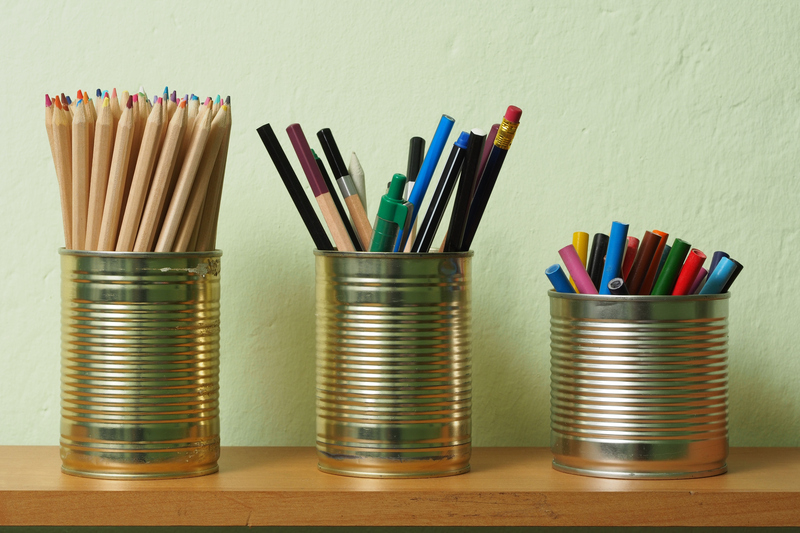Eco-Friendly Tips for Disposing of Large Furniture Pieces
Disposing of large furniture pieces, such as sofas, mattresses, or wardrobes, often presents a significant challenge--especially for environmentally conscious individuals. Whether you're moving, redecorating, or decluttering, knowing responsible ways to get rid of bulky furniture can make a big difference for the planet. In this comprehensive article, we'll explore eco-friendly tips for disposing of large furniture items, ensuring you minimize landfill waste and support a sustainable future.
Why Eco-Friendly Furniture Disposal Matters
Throwing unwanted furniture out with the trash may seem convenient but it has significant environmental consequences. Most large furniture pieces are non-biodegradable and can occupy landfill space for decades, leaching chemicals and harming local ecosystems. Eco-friendly disposal reduces waste, conserves resources, and can positively impact communities in need.
Environmental Impact of Improper Disposal
- Increased Greenhouse Gas Emissions: Decomposing furniture in landfills releases methane and other harmful gases.
- Resource Wastage: Tossed furniture means more trees cut down, metals mined, and plastics produced.
- Soil and Water Contamination: Deteriorating furniture can leach chemicals (from paints, finishes, or foams) into the environment.
By exploring eco-friendly ways to dispose of your used large furniture, you not only do your part for the planet but may even support neighbors, local charities, and small businesses in your community.

Plan Your Large Furniture Disposal Responsibly
Before you start moving that heavy dresser or sofa, take time to consider planning your disposal process. A little foresight can lead to smarter, more sustainable decisions.
Assess Your Furniture's Condition
- Is it structurally sound? If the piece is sturdy, it may have another life left.
- Are there stains, odors, or damages? Some wear and tear is acceptable for donation or repurposing; severe damage may require recycling or specialized disposal.
Understanding the condition helps determine the ideal eco-friendly disposal route for your large furniture.
1. Donate Your Furniture to Extend Its Life
Donating gently used furniture is one of the most effective eco-friendly solutions. By giving your large items a second home, you prevent unnecessary waste and help those in your community.
Where To Donate Large Furniture Pieces
- Charitable Organizations: Many charities accept large furniture pieces, including the Salvation Army, Goodwill, and Habitat for Humanity Restore. Most offer pickup services for heavy items.
- Local Shelters and Community Centers: Homeless shelters, women's refuges, and community outreach programs often take donations for families in need.
- Schools, Churches, and Theaters: Educational and community organizations may need sofas, desks, or bookshelves for lounges and common areas.
*Tip:* Schedule a pickup in advance and double-check donation guidelines for your chosen organization. Items should be clean and free from infestation or excessive damage.
Benefits of Donating Large Furniture
- Reduces landfill waste
- Supports local communities
- Possible tax deductions for donations
2. Sell or Gift Large Furniture Pieces
If you'd like to recoup some costs or offer your furniture to someone who will appreciate it, consider selling or gifting. This is a straightforward--yet highly sustainable--approach to disposing of unwanted furniture in an eco-friendly way.
Options for Selling or Gifting
- Online Marketplaces: Platforms such as Facebook Marketplace, Craigslist, and OfferUp make it easy to connect with buyers or giftees locally.
- Neighborhood Groups: Many areas have community boards or "Buy Nothing" groups where you can give away bulky furniture for free.
- Friends and Family: Sometimes, your network has someone in need of an affordable couch or bookcase!
Process Tips:
- Take clear photos and provide accurate descriptions
- Disclose any imperfections up front
- Arrange for curbside or porch pickup to keep the exchange easy and safe
3. Repurpose or Upcycle Large Furniture
Upcycling is a creative, rewarding way to handle large furniture disposal sustainably. Repurposing gives old pieces an entirely new function--keeping them out of landfills and adding unique charm to your home.
Repurposing Ideas for Big Furniture Items
- Turn a dresser into a bathroom vanity: Add a sink and some paint for a vintage, eco-friendly upgrade.
- Convert an old dining table: Transform it into a desk or workbench with a few modifications.
- Sofa frame garden bench: Remove cushions and reupholster for creative outdoor seating.
- Bookshelves as room dividers: Provide open-style separation for studio or open-plan spaces.
There are countless DIY tutorials online to guide your project. Not only do these ideas minimize waste, but they also add personalized value to your space!
4. Recycle Large Furniture Responsibly
When a sofa, mattress, or cabinet is too damaged to reuse, recycling is the next best eco-friendly solution. Many furniture components--including metal frames, wooden parts, and certain plastics--are recyclable.
How to Recycle Bulky Furniture Items
- Contact Your Local Recycling Center: Some centers accept large furniture or direct you to specialized processors. Ask if pickup is available for oversized items.
- Disassemble the Furniture: Remove fabric, foam, or non-recyclable elements to separate recyclable materials. Store these in appropriate bins.
- Check Municipal Bulk Collection Days: Many towns offer special "bulk trash" pickups where recyclable large items are handled differently than normal waste.
*Did you know?* Mattress recycling programs are available in many U.S. states and Canadian provinces. These collect and break down old mattresses, reclaiming steel, foam, and fiber for reuse!
5. Use Green Junk Removal Services
Sometimes, a professional touch is needed--especially for very heavy or hazardous items such as sofas with bed frames, water-damaged dressers, or old reclining chairs. Fortunately, many junk removal companies now offer eco-conscious options.
How to Choose an Eco-Friendly Junk Hauler
- Look for companies advertising green or sustainable disposal methods.
- Ask how much material is donated, recycled, or sent to landfill. The best providers will prioritize reuse and recycling over dumping.
- Read reviews and check ratings for honest feedback before scheduling removal.
These services do the heavy lifting, sort recyclables, and dispose of non-reusable parts properly, reducing your carbon footprint. Some even work with local charities when appropriate!
6. Schedule a Manufacturer or Retailer Take-Back
As sustainability awareness grows, leading furniture retailers and manufacturers are offering take-back or buy-back programs. This initiative ensures responsible, large furniture disposal and recycling.
Examples of Take-Back Programs
- IKEA: Many stores now accept used furniture from their brand for refurbishment or recycling.
- Mattress retailers: Some mattress sellers remove old units when delivering new ones, often recycling components for you.
- Local furniture chains: Inquire about eco-friendly return or upgrade incentives when shopping.
Always verify your retailer's policy and prepare your furniture (clean and clear) before scheduled pickup or drop-off.
7. Properly Dispose of Hazardous Components
Certain large furniture items may contain hazardous materials: mercury (in lights), lead paint (in antiques), or flame-retardant chemicals (in some couches and chairs). Safely and responsibly disposing of hazardous waste prevents environmental contamination and keeps your community safe.
How to Handle Hazardous Furniture Parts
- Consult your local hazardous waste disposal program
- Remove batteries, light bulbs, or electronic components before discarding
- Never dump items with hazardous elements in regular landfill trash
Pro Tip: Label hazardous components and use original packaging if available when dropping off at a municipal center.
8. Avoid Illegal Dumping
Dumping furniture in alleys, parks, or vacant lots is not only harmful--it's illegal. This practice attracts pests, pollutes neighborhoods, and can lead to hefty fines. Always use designated pickup programs or donation points for a responsible, eco-friendly furniture disposal.
9. Reduce Future Furniture Waste
Beyond disposal, reducing overall waste from large furniture is key to sustainability. Consider these practices for your next purchase:
- Buy quality over quantity: Well-made furniture lasts years and is easier to repair or repurpose.
- Choose modular or flat-pack designs: These are easier to transport, store, and eventually recycle.
- Opt for sustainable materials: FSC-certified wood, bamboo, and recycled metals are better for the environment.
- Support companies with clear eco-disposal policies or closed-loop programs
Making informed choices today helps prevent unnecessary furniture waste in the future--keeping our landfills lighter and our planet healthier.

Frequently Asked Questions: Eco-Friendly Large Furniture Disposal
Can I leave my old furniture on the curb for trash pickup?
It depends on your municipality. Many cities prohibit curbside disposal of large furniture items, or require scheduling of bulk pickup days. Check with your local waste department for eco-conscious pickup schedules and guidelines.
Are there fees for recycling or disposing of big furniture?
Junk removal or recycling centers may charge a fee due to transport and processing requirements. Some charities and buy-back programs offer free pickup if the items can be reused.
Is furniture firewood or landfill mulch a good option?
Some cities chip untreated, real-wood furniture for park mulch. However, painted or chemically treated items should not be burned or mulched, as they can release toxins.
How can I be sure my old furniture doesn't end up in the landfill?
Choose reputable charities, green junk removal companies, or recycling centers with transparent practices. Ask what percentage of haul-aways are recycled or donated.
Conclusion: Make Furniture Disposal Sustainable
Eco-friendly disposal of large furniture pieces benefits our environment, reduces landfill waste, and can support your local community. Whether you choose to donate, sell, repurpose, recycle, or use green hauling services, every action helps build a cleaner and brighter future for all. Start planning your next big furniture move with these eco-conscious tips, and inspire others to make responsible choices in their own homes!
- Reuse whenever possible
- Recycle when practical
- Support local charities and sustainable manufacturers
- Always avoid illegal dumping
By following these eco-friendly tips for disposing of large furniture pieces, you'll make a meaningful impact on both your home and the environment.